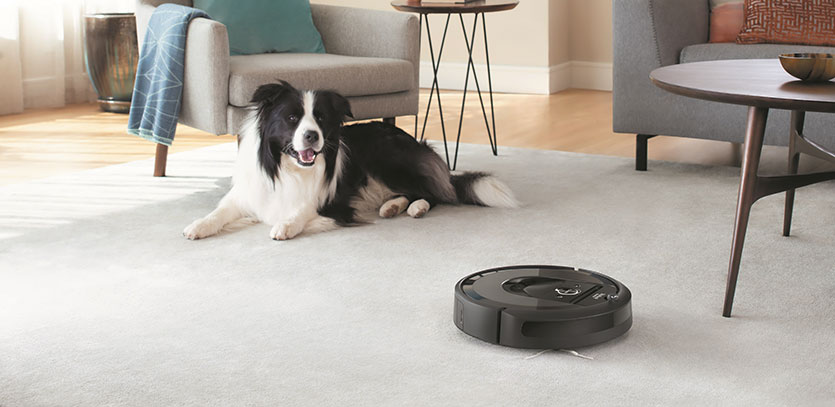Helping iRobot Become a Tech Lifestyle Brand
Students in Northwestern's Engineering Design Innovation (EDI) program collaborated with the company known for its Roomba® vacuum cleaner to address new business opportunities.
Visitors to the iRobot website are greeted by a picture of a Roomba cleaning a living room floor on its own. The robot vacuum is the most famous product developed in the company's 30-plus year history, but as the website states, iRobot's technology isn't just about robots. It's also about people, and finding better ways to help people get more done.
To aid that process, iRobot recently collaborated with students in Design Strategy, one of the core courses in Northwestern's Engineering Design Innovation (EDI) program. Students were tasked with examining how iRobot could become an even more thoughtful partner in people's homes, either through smart home connectivity or by addressing emerging needs in home health.
“iRobot is perceived as a leader in home cleaning through robotic application, however, they are not necessarily viewed as a tech lifestyle brand that acts as a partner in the intelligent home or home-health arenas," said Professor Greg Holderfield. "A thoughtful strategy was needed to align the brand, capabilities and opportunity in a way that positioned iRobot with the ability to win in either space."
Students used a human-centered design approach — which constantly examines the end-user's experience when developing products — to investigate how design innovations could help showcase iRobot as a broader technology leader. Their final solutions included hardware, software, and service ideas.
To Holderfield, what students proposed was not as important as the journey they took to reach that outcome.
"This design-strategy journey positioned students to be more engaged with the notion that to bring about impact, ideas must be connected to the business if they hope to see the light of day," he said. "What we think is a great idea may not be achievable by the organization or may not be aligned with the mission, values, objectives, and goals of the organization.
"Design strategy enables students to step up with tools, language and a mindset that positions them to create and deliver new value that is defensible and connects to the business."
Empowering students and enabling them to discover, frame, and build innovative concept systems that ultimately deliver on short- and long-term business goals is always Holderfield's priority. To do that, it's necessary for students to understand the importance of ethnography, consumer empathy, creative collaboration, brainstorming, prototyping, industrial design and design language, brand, and storytelling.
"Getting out of your comfort zone is always a challenge for design innovators, and this cohort experienced that often as they focused on users who didn’t look like or act like them," Holderfield said. "I often preach that the innovation game is not for the faint of heart, and that in order to succeed you need to prepare and lean into being a lifelong learner of people, organizations, constraints, and motivations."
EDI students are equipped to do just that.
"EDI students have an incredible positive energy that can often be infectious," Holderfield said. "While they came into class curiously enthusiastic, and perhaps a bit naive, they left more confident and more empowered with tools and language that will serve them beyond graduate design school."


